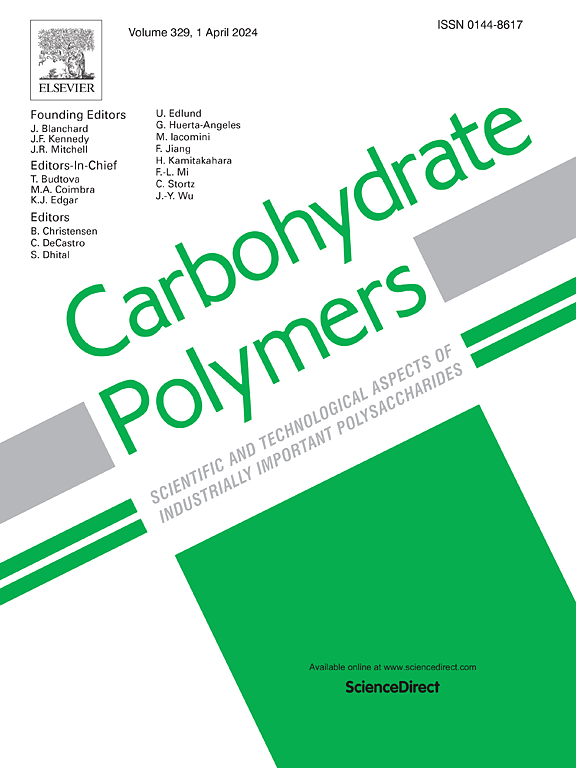Acetyl and pyruvate groups affect the synergistic interaction between xanthan gum and Gleditsia sinensis polysaccharide by regulating the conformational transition of xanthan gum
IF 10.7
1区 化学
Q1 CHEMISTRY, APPLIED
引用次数: 0
Abstract
The contents of acetyl and pyruvate groups in XG is one of the important factors affecting its order-disorder conformation. However, with the deepening of study on the interaction between XG and other polysaccharides, the impact of this fine structure on the synergistic interaction is still unclear. To resolve this problem, a strategy mainly based on rheology was developed in this study. The deacetylated and depyruvated derivatives were prepared and characterized using FT-IR, XRD, and TG. Moreover, the quantitative results indicated that the acetyl content in Dea-XG is 0.043 % (w/w), and the content of pyruvate group in Dep-XG is 0.99 % (w/w). Rheological experiments revealed that Dea-XG exhibited stronger interactions with GSP (higher viscosity and modulus) compared with XG, while Dep-XG showed weaker synergy. The results of temperature sweep indicated that the binding temperatures of Dea-XG and XG with GSP are above the point of transition from disorder to order of the XG conformation, while Dep-XG is opposite. Temperature-dependent studies further confirm that XG fine structures enhance synergistic effects with GSP by increasing the disordered structure, while increasing the ordered structures inhibit them. This study provides a new idea for comprehensive understanding of the synergistic mechanism between XG and GSP.

求助全文
约1分钟内获得全文
求助全文
来源期刊

Carbohydrate Polymers
化学-高分子科学
CiteScore
22.40
自引率
8.00%
发文量
1286
审稿时长
47 days
期刊介绍:
Carbohydrate Polymers stands as a prominent journal in the glycoscience field, dedicated to exploring and harnessing the potential of polysaccharides with applications spanning bioenergy, bioplastics, biomaterials, biorefining, chemistry, drug delivery, food, health, nanotechnology, packaging, paper, pharmaceuticals, medicine, oil recovery, textiles, tissue engineering, wood, and various aspects of glycoscience.
The journal emphasizes the central role of well-characterized carbohydrate polymers, highlighting their significance as the primary focus rather than a peripheral topic. Each paper must prominently feature at least one named carbohydrate polymer, evident in both citation and title, with a commitment to innovative research that advances scientific knowledge.
 求助内容:
求助内容: 应助结果提醒方式:
应助结果提醒方式:


